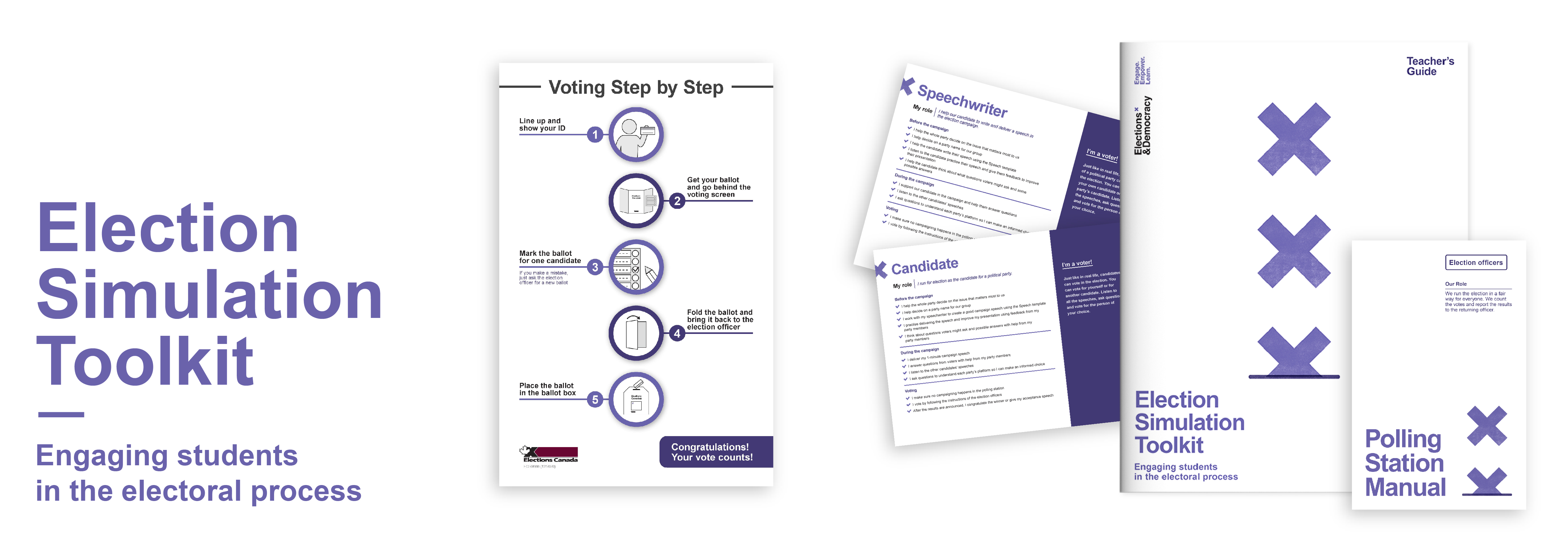Elections Canada has offered election simulation kits for over 25 years, giving teachers everything they need to run a mock election at any time. Now, the kit has been redesigned to increase role-play, enable better pedagogy, and make it easier for teachers to use.
The lesson has been tested with real students in classrooms across Canada and takes just one hour to complete. Thanks to its student-led pedagogy, it works for both younger (ages 9–13) and older students (ages 14–17).
Updated Pedagogy for Student-Centred Learning
The Election Simulation Toolkit now features the inquiry-based pedagogy found in Elections Canada’s other resources, including a three-part lesson plan, clear learning goals, and a compelling inquiry question: “How can we take part in federal elections?” It also puts more emphasis on role-playing that involves more students in active participation.
First, students identify the issues in your school or community that they care about. Next, they work together to develop a campaign aimed at tackling the issue. Finally, they vote for the candidate who they think had the best campaign, using authentic election materials.
More Role-Playing
While the election kit has always featured the roles of election officers and voters, it now includes a broader range of roles to actively engage more students and show them more ways to take part in the election process.
Students create up to six political parties. With the help of a reusable role card, each student takes on one of the following roles:
- Candidate
- Campaign manager
- Speechwriter
- Researcher
- Communication specialist
- Election officer
New Hands-On Materials
Teachers know that hands-on materials can support student learning. In addition to the ballot boxes and voting screens that have always been provided, the redesigned toolkit gets all of your students actively involved in the electoral process with more printed, ready-to-use materials. If you’re short on time, you can download and print all the materials you need.
There are also more materials to support all learners, including a vocabulary sheet, speech template, class poster and numbered ballots. The students who take on the roles of election officers use the Polling Station Manual for step-by-step guidance on running the election.
You’ll also find teacher tips and extension ideas to get more curriculum value out of the activity. For example, you could use the exit card as the beginning of a language arts activity; or the election data to engage in meaningful math processes, such as calculating results or creating graphs and charts.
The goal of the Election Simulation Toolkit has always been to help students experience the voting process in meaningful and engaging ways. This has not changed. The more hands-on experience future voters have, the more prepared they’ll be to take on active roles in our elections and democracy when they’re old enough to do so.
Access all the materials in the Election Simulation Toolkit online, or order your updated kit.


